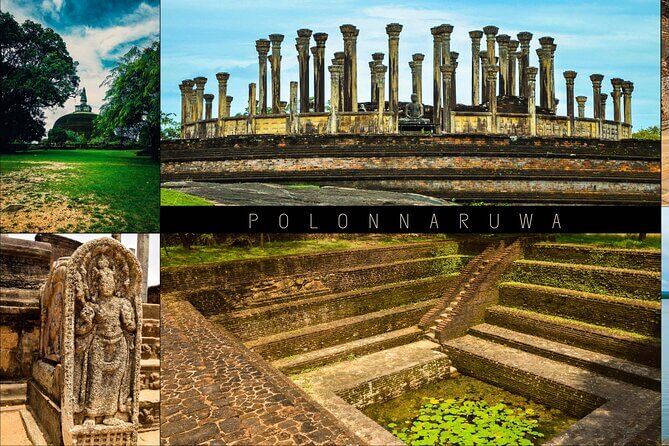Sri Lanka, often referred to as the “Pearl of the Indian Ocean,” is a treasure trove of history and culture. From ancient kingdoms to colonial influences, this island nation offers a fascinating walk through history Sri Lanka style. Whether you’re an avid historian or simply someone who loves exploring the past, Sri Lanka promises a captivating journey filled with stories etched in stone, vibrant traditions, and architectural marvels.
In this blog post, we’ll take you on a virtual tour of some of Sri Lanka’s most iconic historical sites. Along the way, you’ll discover how these landmarks shaped the island’s identity and why they continue to draw travelers from around the globe. So grab your metaphorical walking shoes, and let’s embark on a memorable walk through history Sri Lanka has to offer!
Why Sri Lanka is a Historical Gem
Before diving into specific locations, let’s explore why Sri Lanka stands out as a destination for history enthusiasts. The island’s strategic location along ancient trade routes made it a melting pot of cultures, religions, and ideas. Over thousands of years, Sri Lanka evolved into a land where Buddhism thrived, colonial powers left their mark, and indigenous traditions remained alive.
This rich tapestry of influences is evident in every corner of the country. Ancient cities like Anuradhapura and Polonnaruwa showcase the grandeur of bygone eras, while colonial towns like Galle reflect European architecture and lifestyles. What makes Sri Lanka truly unique is how seamlessly its past blends with the present—locals still honor age-old customs, and many historical sites remain active places of worship.
For anyone looking to experience a walk through history Sri Lanka provides countless opportunities to connect with the past in meaningful ways. Now, let’s delve into some must-visit destinations that bring this heritage to life.
Sigiriya: The Lion Rock Fortress
No discussion about Sri Lanka’s history would be complete without mentioning Sigiriya, one of the country’s most iconic landmarks. Often called the “Eighth Wonder of the World,” this ancient rock fortress is a testament to human ingenuity and artistic brilliance.
A Glimpse Into Its Past
Sigiriya dates back to the 5th century AD when King Kashyapa chose this massive rock as the site for his royal palace. Perched atop a 200-meter-high monolith, the fortress served both as a defensive stronghold and a symbol of power. Today, visitors can still admire remnants of the king’s opulent lifestyle, including intricate frescoes, landscaped gardens, and the famous Mirror Wall.
Exploring Sigiriya Today
Walking through Sigiriya feels like stepping into a time machine. As you ascend the rock, you’ll encounter steep staircases flanked by lion paw sculptures—a nod to the fortress’s original name, “Lion Rock.” Halfway up, don’t miss the breathtaking frescoes depicting celestial maidens, which have survived centuries despite exposure to the elements.
Once you reach the summit, panoramic views of lush greenery stretch as far as the eye can see. It’s easy to imagine why King Kashyapa chose this spot—it’s nothing short of majestic.
Tips for Your Visit
- Best Time to Go: Early morning or late afternoon to avoid crowds and intense heat.
- What to Bring: Comfortable shoes, sunscreen, and plenty of water.
- Guided Tours: Consider hiring a local guide to gain deeper insights into Sigiriya’s history.
For more details on planning your trip, check out our comprehensive guide on visiting Sigiriya .
Anuradhapura: The Cradle of Sri Lankan Civilization
If you’re eager to take a deeper walk through history Sri Lanka, Anuradhapura is a must-see destination. As one of the oldest continuously inhabited cities in the world, it served as the capital of the Sinhalese kingdom for over a millennium.
Discovering Ancient Wonders
Anuradhapura is home to several UNESCO World Heritage Sites, each telling a story of spiritual significance and architectural prowess. Highlights include the sacred Bodhi Tree, believed to be a sapling from the tree under which Buddha attained enlightenment, and the towering Ruwanwelisaya stupa, a masterpiece of Buddhist architecture.
As you wander through the ruins, you’ll notice how seamlessly nature intertwines with man-made structures. Monkeys swing from branches, peacocks strut across pathways, and lotus ponds add a serene touch to the landscape.
Experiencing Local Life
One of the joys of visiting Anuradhapura is interacting with pilgrims who flock here daily. Watching them perform rituals and offer prayers adds a personal dimension to your walk through history Sri Lanka. You might even pick up a few blessings yourself!
Practical Information
- Getting Around: Rent bicycles or hire tuk-tuks to explore the sprawling archaeological park.
- Dress Code: Wear modest clothing if you plan to visit temples and religious sites.
- Nearby Attractions: Combine your trip with visits to Mihintale, the birthplace of Buddhism in Sri Lanka.
To learn more about Anuradhapura’s cultural significance, click here .
Polonnaruwa: A Kingdom Frozen in Time
After Anuradhapura, Polonnaruwa became the second major capital of Sri Lanka. This medieval city flourished under the reign of King Parakramabahu I, whose vision transformed it into a hub of art, religion, and engineering.
Marvels of Medieval Architecture
Polonnaruwa is renowned for its well-preserved ruins, many of which highlight the sophistication of ancient Sri Lankan society. Key attractions include the Gal Vihara, featuring four colossal Buddha statues carved from granite, and the Royal Palace complex, where you can envision the splendor of royal life.
Another standout feature is the Parakrama Samudra, a vast artificial reservoir built to support agriculture. Even today, this reservoir plays a vital role in sustaining local communities—a testament to the ingenuity of ancient engineers.
A Walk Through History Sri Lanka Style
Exploring Polonnaruwa is like flipping through the pages of a history book. Each monument tells a story, whether it’s the resilience of a once-great empire or the enduring legacy of Buddhism. Take your time to soak in the atmosphere and appreciate the craftsmanship that has stood the test of time.
Insider Tips
- Photography Opportunities: Capture stunning shots of the reclining Buddha and other iconic structures.
- Guided Audio Tours: Use audio guides available at the entrance for an immersive experience.
- Local Cuisine: Try traditional rice and curry dishes at nearby eateries after your exploration.
For a detailed itinerary, head over to our article on exploring Polonnaruwa .
Galle Fort: A Colonial Legacy
While much of Sri Lanka’s history revolves around ancient kingdoms, Galle Fort offers a glimpse into the island’s colonial past. Built by the Portuguese and later fortified by the Dutch, this UNESCO-listed fort is a charming blend of European architecture and tropical charm.
Strolling Through Galle’s Streets
A walk through Galle Fort feels like stepping into a different era. Cobblestone streets lead to quaint cafes, boutique shops, and historic churches. Don’t miss the iconic Galle Lighthouse, which has guided sailors since the 19th century, and the Maritime Museum, which chronicles the fort’s maritime history.
The fort’s ramparts provide excellent vantage points for watching sunsets over the Indian Ocean. As waves crash against the walls below, you’ll feel a sense of tranquility that transcends time.
Cultural Encounters
Galle isn’t just about relics; it’s also a living, breathing community. Chat with artisans crafting handmade jewelry, sip freshly brewed Ceylon tea at a cozy café, or attend a cricket match on the grounds within the fort. These experiences make your walk through history Sri Lanka all the more enriching.
Quick Facts
- Best Time to Visit: Late afternoon for cooler temperatures and golden-hour photography.
- Transportation: Reach Galle via train or bus from Colombo for a scenic journey.
- Nearby Attractions: Visit Unawatuna Beach or the Japanese Peace Pagoda for additional adventures.
Learn more about Galle’s colonial heritage in our dedicated post here .
Dambulla Cave Temple: A Spiritual Retreat
For those seeking a spiritual walk through history Sri Lanka, the Dambulla Cave Temple is a must-visit. Carved into a massive rock, this complex houses five caves adorned with colorful murals and hundreds of Buddha statues.
Stepping Into Sacred Spaces
Each cave at Dambulla serves a unique purpose, from meditation halls to shrines dedicated to deities. The centerpiece is the Golden Temple, a modern addition that complements the ancient caves with its striking architecture.
Climbing to the temple requires ascending a series of steps, but the effort is worth it. Inside, you’ll find yourself surrounded by vibrant artwork depicting scenes from Buddhist mythology. The dim lighting and cool interiors create a peaceful ambiance perfect for reflection.
Connecting With Tradition
Many locals visit Dambulla to pay respects and seek blessings. Observing their devotion adds depth to your understanding of Sri Lanka’s spiritual heritage. If possible, join a guided meditation session to fully immerse yourself in the experience.
Practical Information
- Opening Hours: Daily from 7 AM to 7 PM.
- Entrance Fee: Includes access to both the caves and the Golden Temple.
- Nearby Attractions: Pair your visit with a trip to Sigiriya or Minneriya National Park.
For additional recommendations on spiritual tourism in Sri Lanka, visit this link .
Conclusion: Embark on Your Own Walk Through History Sri Lanka
From the majestic heights of Sigiriya to the tranquil halls of Dambulla, Sri Lanka invites you to embark on a walk through history unlike any other. These sites not only preserve the island’s storied past but also inspire awe and wonder in all who visit.
Ready to start planning your adventure? Begin by researching each destination thoroughly, considering factors like accessibility, weather conditions, and personal interests. And remember, history comes alive when you engage with it—talk to locals, ask questions, and embrace every moment.
Have you already taken a walk through history Sri Lanka? Share your favorite moments in the comments below! We’d love to hear your stories and answer any questions you might have.





